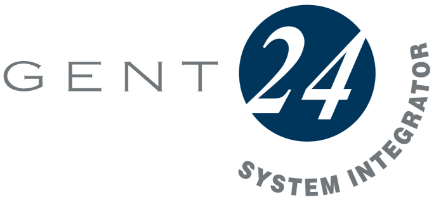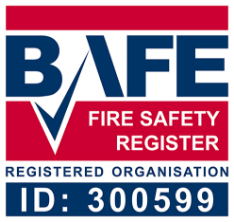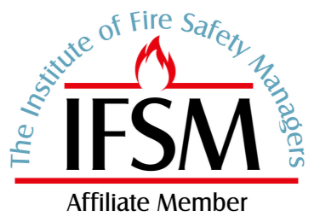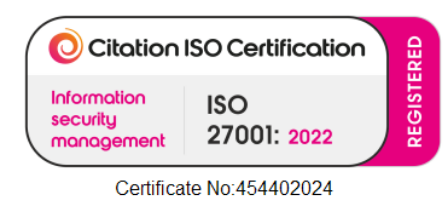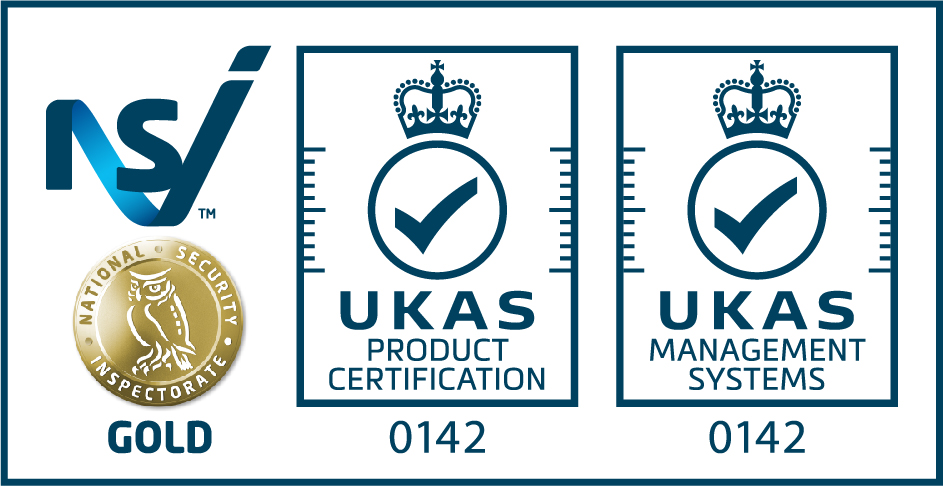Recent high-profile care home fires have underscored the vital importance of effective fire safety. Regulatory changes in the UK reflect a growing urgency to protect vulnerable residents and uphold the highest standards in every care setting.
Care home residents face unique risks due to mobility challenges and cognitive impairments. This places a legal and moral responsibility on care providers to prioritise prevention and rapid response. Conducting a thorough fire risk assessment for care homes is essential to safeguard lives, ensure compliance, and maintain trust within the community.
Following an up-to-date fire risk assessment for care homes not only protects your residents but also shields your organisation from reputational damage and legal penalties. This 2025 essential guide outlines best practices and compliance steps every care home must follow.
In this article, you will find a step-by-step, expert-led guide to fire risk assessment for care homes in 2025. We will cover legal requirements, risk identification, assessment processes, practical solutions, staff training, and record-keeping to help you achieve and sustain compliance.
Understanding 2025 Fire Safety Regulations for Care Homes
Fire safety regulations in UK care homes are evolving rapidly in response to recent high-profile incidents and ongoing inquiries. For any fire risk assessment for care homes, understanding the legal landscape is the crucial first step. This section breaks down the core legislation, operator duties, upcoming changes for 2025, and the practical impacts on daily operations.
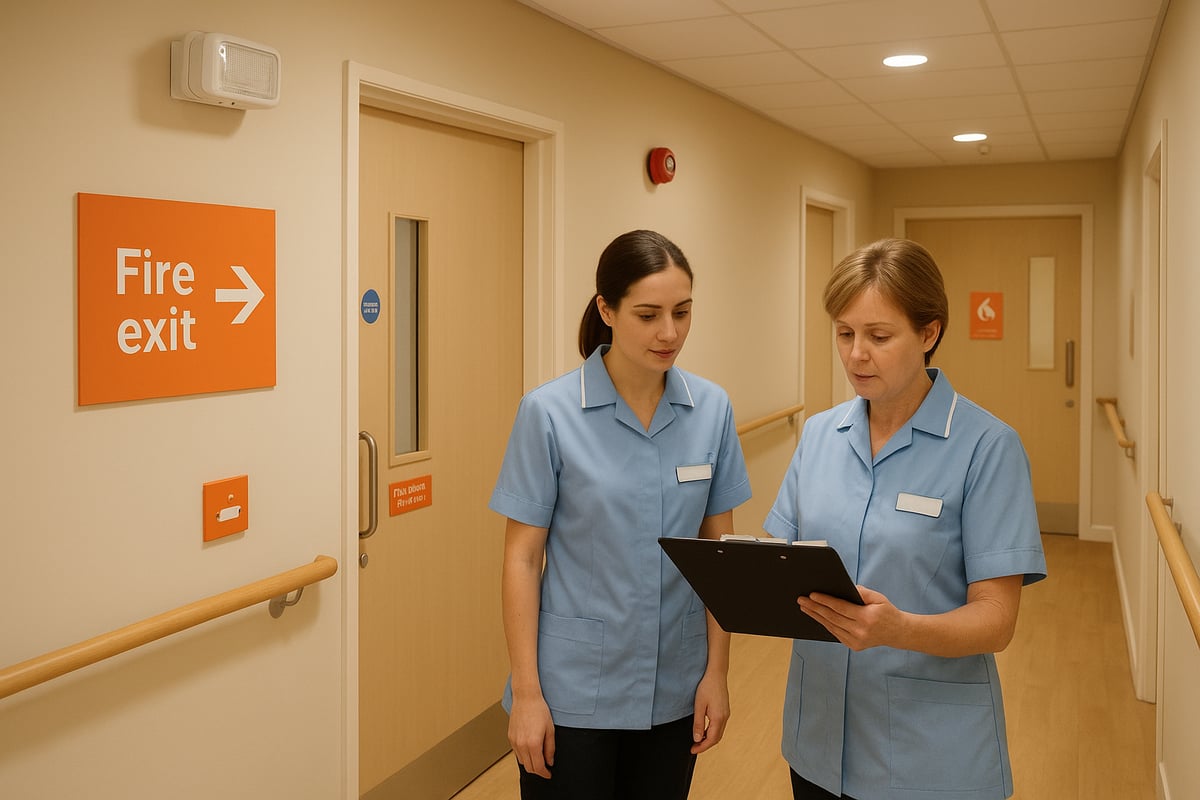
Overview of Current UK Fire Safety Legislation
The foundation for fire safety in care homes is the Regulatory Reform (Fire Safety) Order 2005. This legislation requires every care home to carry out a fire risk assessment for care homes, identifying hazards and managing risks.
In 2025, several updates are expected, influenced by the Grenfell Tower Inquiry. These updates will likely tighten requirements on fire compartmentation, evacuation procedures, and digital record-keeping. Enforcement comes from the Care Quality Commission (CQC) and local fire authorities, who have increased inspections and penalties. For example, recent enforcement action saw a London care home temporarily closed due to failures in fire alarm maintenance and evacuation planning.
Specific Duties for Care Home Operators
Care home owners, managers, or operators are classed as the “Responsible Person,” with strict legal obligations. They must conduct regular fire risk assessment for care homes, act on findings, and maintain up-to-date action plans.
Key duties include:
- Protecting vulnerable residents, such as those with limited mobility or cognitive impairment
- Developing and maintaining Personal Emergency Evacuation Plans (PEEPs)
- Ensuring all staff are trained and aware of fire safety procedures
Non-compliance can result in significant fines, prosecution, or even closure. For detailed government-approved steps, the Fire safety risk assessment guidance provides practical advice for care home providers.
New and Emerging Standards for 2025
The year 2025 brings several anticipated changes to the fire risk assessment for care homes. Digital record-keeping and mandatory electronic reporting are set to become standard, streamlining compliance and inspection processes.
Fire door inspections will be more rigorous, with enhanced requirements for documentation and frequency. Multi-storey care homes will need to upgrade to wireless fire alarm systems, improving reliability and response times. In addition, increased scrutiny of fire compartmentation and evacuation hardware is expected.
Key Statistics & Trends
Recent CQC data reveals that approximately 15% of care homes failed at least one aspect of their fire risk assessment for care homes audit in the past year. The average cost of a fire-related incident in a care setting now exceeds £150,000, factoring in both direct damage and regulatory penalties.
Enforcement trends show a rise in unannounced inspections and a greater emphasis on digital compliance. Compliance rates have improved overall, but gaps remain in older properties and those with complex resident needs.
How Regulations Affect Daily Operations
Stricter regulations mean care homes must maintain more detailed documentation, including digital logs of inspections, maintenance, and staff training. Inspection frequency has increased, putting pressure on management teams to stay audit-ready at all times.
Staff must receive ongoing fire safety training, and budgets must be allocated for system upgrades and regular maintenance. For many care homes, this means a cultural shift towards continuous improvement and proactive risk management.
Identifying Fire Risks in Care Homes
Understanding the risks that threaten care home safety is vital for every fire risk assessment for care homes. Identifying these hazards is the first step toward protecting vulnerable residents and ensuring compliance with 2025 regulations.
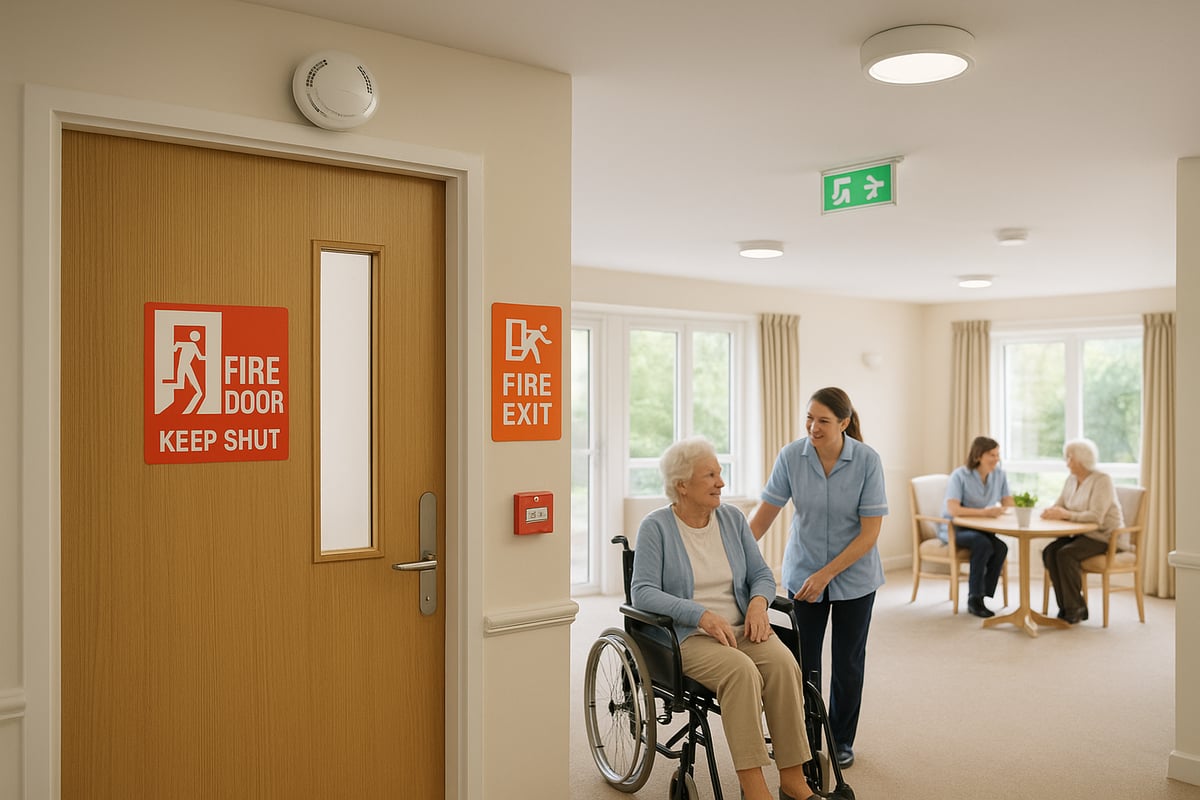
Common Fire Hazards in Care Settings
Care homes contain a variety of everyday items and activities that can quickly turn hazardous. The most frequent fire risks include:
- Faulty or overloaded electrical equipment
- Kitchens with unattended cooking appliances
- Smoking in bedrooms or communal areas
- Misuse of oxygen cylinders and medical devices
- Flammable furnishings, curtains, and bedding
NHS data shows that electrical faults and kitchen incidents account for a significant proportion of care home fires. Recognising these hazards is a core part of any fire risk assessment for care homes and must be addressed proactively.
Resident Vulnerabilities and Risk Factors
Residents in care homes often face mobility issues, making evacuation challenging. Cognitive impairments such as dementia or confusion can affect response times and understanding of alarms.
The use of medical equipment, especially oxygen, increases flammability risks. In one case, a fire involving immobile residents required specialised evacuation techniques and rapid staff response.
By understanding these unique vulnerabilities, a fire risk assessment for care homes can be tailored to protect every individual effectively.
Building Design and Layout Considerations
The age and design of care home buildings play a significant role in fire safety. Older properties may lack adequate fire compartmentation, while modern facilities are often built to stricter standards.
Key factors include:
- Number and accessibility of escape routes
- Condition and location of fire doors
- Ease of access for emergency services
Assessing these design aspects is essential in a comprehensive fire risk assessment for care homes, ensuring all areas are safe and compliant.
Human Factors and Staff Behaviours
Staffing levels, shift patterns, and staff training can impact fire safety. Shortages increase the risk of oversight, while inconsistent procedures may lead to missed hazards.
Common challenges include:
- Gaps in fire safety training or refresher courses
- Infrequent or poorly coordinated fire drills
- Failure to follow established protocols
Regular scenario planning and drills help staff respond confidently during emergencies, reducing human error in a fire risk assessment for care homes.
Seasonal and Environmental Risks
Fire risks fluctuate with the seasons. In winter, portable heaters and festive decorations can become ignition sources. Care homes near wooded areas or urban environments may also face threats from arson or nearby wildfires.
Being aware of these changing risks ensures a fire risk assessment for care homes remains relevant throughout the year, adapting to both internal and external factors.
Risk Assessment Tools and Checklists
A structured approach is essential for thorough risk identification. Standardised checklists help ensure no hazard is overlooked, covering everything from electrical safety to escape route accessibility.
Digital tools, many recommended by UK fire authorities, streamline inspection processes and record-keeping. For those seeking professional support, Fire risk assessment services provide expert guidance tailored specifically to care home environments.
Choosing the right tools guarantees a robust and up-to-date fire risk assessment for care homes.
Step-by-Step Fire Risk Assessment Process for Care Homes
Conducting a thorough fire risk assessment for care homes is a structured process that ensures the safety of residents and compliance with regulations. Each step builds on the previous, creating a robust foundation for ongoing fire safety management.

Step 1: Identify Fire Hazards
Begin your fire risk assessment for care homes with a detailed walkthrough of the entire premises. Look for potential sources of ignition, such as faulty electrical equipment, overloaded sockets, or unattended cooking appliances.
Review incident logs and maintenance records to spot recurring issues. Pay close attention to hidden wiring faults, storage of flammable materials, and areas where clutter could obstruct escape routes. Engaging staff in this step often uncovers overlooked hazards that could pose serious risks.
Step 2: Identify People at Risk
Next, map out who could be at risk if a fire occurs. This includes residents, staff, visitors, and contractors. Consider the unique needs of residents with limited mobility, cognitive impairments, or those reliant on medical equipment.
Assess how risks change during different times, such as reduced night staffing. Special attention should be given to bariatric residents or those requiring additional assistance. This step ensures your fire risk assessment for care homes addresses every individual present in the building.
Step 3: Evaluate, Remove, and Reduce Risks
Once hazards and people at risk are identified, evaluate how to minimise or eliminate dangers. Use the hierarchy of control: remove hazards where possible, substitute safer alternatives, or implement engineering controls like improved fire doors and emergency lighting.
Upgrading fire alarm systems is essential. For guidance, review the fire alarm system requirements to ensure your systems meet the latest care home standards. For example, replacing portable heaters with safer heating solutions can significantly reduce risk.
Step 4: Record, Plan, and Train
Document every stage of your fire risk assessment for care homes. Record identified risks, actions taken, and dates of review.
Develop and regularly update evacuation plans, including Personal Emergency Evacuation Plans (PEEPs) tailored to each resident’s needs. Train all staff on fire procedures and schedule regular drills to ensure everyone knows their role in an emergency. Effective record-keeping and training are vital for both compliance and resident safety.
Step 5: Review and Update Regularly
Fire risk assessment for care homes is not a one-off task. Review your assessment annually, after significant changes, or following fire incidents.
Incorporate feedback from fire drills and inspections to keep procedures current. Consider the benefits of digital record-keeping, which can streamline updates and make compliance easier. Regular reviews help identify new risks and maintain high safety standards.
Example Fire Risk Assessment Template
A structured template simplifies record-keeping and ensures consistency. Key sections should include:
| Section | Details Required |
|---|---|
| Hazards Identified | List all fire risks observed |
| People at Risk | Specify residents, staff, etc. |
| Actions Taken | Describe mitigation measures |
| Review Dates | Schedule for next assessment |
Using a template keeps your fire risk assessment for care homes organised and audit-ready.
Involving External Specialists
Sometimes, involving a qualified fire risk assessor is the best course of action. External specialists bring expertise, identify overlooked hazards, and ensure your fire risk assessment for care homes meets regulatory standards.
Third-party audits offer impartial feedback and reassurance that your care home is as safe as possible.
Implementing Fire Safety Solutions and Mitigation Strategies
Introducing robust solutions is essential for any fire risk assessment for care homes. Implementing effective mitigation strategies protects vulnerable residents, ensures compliance, and creates a safer environment for everyone.
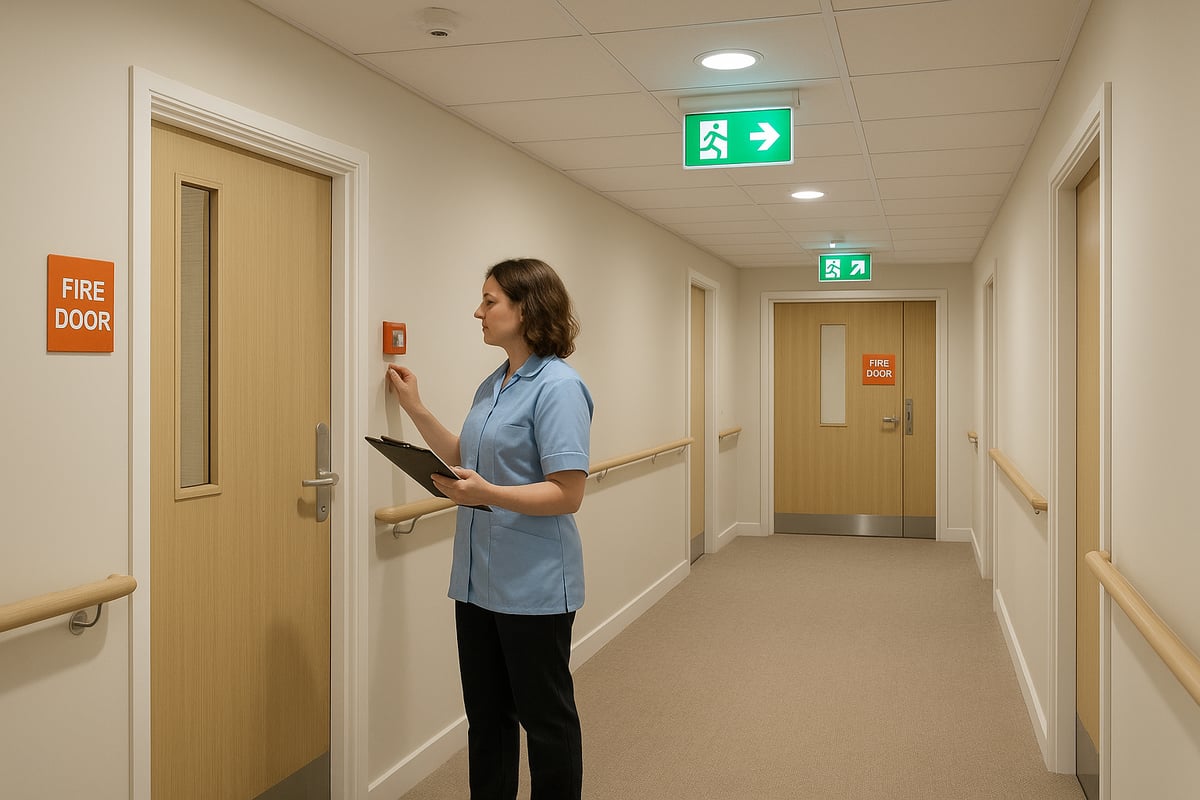
Upgrading Fire Detection and Alarm Systems
Modern fire detection is at the heart of every effective fire risk assessment for care homes. Addressable and wireless alarm systems provide rapid alerts and detailed information about incident locations. Integration with nurse call and alert systems ensures that staff can respond quickly.
A recent care home case study demonstrated that upgrading to an advanced wireless alarm system reduced emergency response times by 30 percent. This improvement significantly increased resident safety.
Fire Doors, Compartmentation, and Escape Routes
Fire doors and compartmentation are critical for containing fire and smoke, giving residents time to evacuate. Legal standards require regular inspection and maintenance of fire doors. Clear, unobstructed escape routes must always be maintained.
Staff should check that fire doors close properly and that escape routes are free from obstructions at all times. Regular checks form a core part of any fire risk assessment for care homes.
- Inspect fire doors weekly
- Remove trip hazards from corridors
- Ensure signage is visible
Emergency Lighting and Signage
Reliable emergency lighting is vital for safe evacuation during a fire. Placement should cover all corridors, stairwells, and communal areas. LED options offer longer lifespan and lower maintenance costs compared to traditional lighting.
Routine testing helps maintain compliance and supports the fire risk assessment for care homes. Well-marked escape routes and illuminated signage provide reassurance for both residents and staff.
Fire Suppression and Extinguishing Equipment
Selecting the right extinguishers is essential in care settings. Water, foam, and CO2 extinguishers cover most risks, while kitchen areas may require wet chemical units. Sprinkler systems are increasingly important for risk mitigation.
From March 2025, sprinklers will be mandatory in all new care homes in England. A recent incident showed that a care home with sprinklers contained a kitchen fire to a single room, preventing injuries and minimising damage.
Oxygen Safety and Storage Protocols
Oxygen cylinders and concentrators present unique fire hazards. Safe storage, clear signage, and regular staff training are all required. Staff must understand the risks of smoking or open flames near oxygen.
Including oxygen safety protocols in the fire risk assessment for care homes reduces the likelihood of serious incidents. Documenting these measures helps demonstrate compliance during inspections.
Ongoing Maintenance and Monitoring
Consistent maintenance is essential for long-term safety. Schedule regular inspections and tests for all fire safety equipment. Digital monitoring systems simplify compliance and provide instant access to maintenance records.
- Monthly alarm tests
- Quarterly fire door checks
- Annual equipment servicing
Digital tools also support continuous improvement by tracking issues and prompting timely action.
Funding and Budgeting for Safety Upgrades
Budgeting for safety upgrades is often a challenge. Grants and dedicated funding streams are available for care homes investing in fire protection. A cost-benefit analysis can justify major upgrades, showing the long-term savings from reduced risk and insurance premiums.
For example, one provider found that investing in addressable alarm systems paid for itself within two years through lower insurance costs and fewer false alarms. Prioritising these investments within the fire risk assessment for care homes delivers measurable benefits.
Staff Training, Drills, and Emergency Preparedness
Effective staff training is the cornerstone of a robust fire risk assessment for care homes. With vulnerable residents relying on prompt, skilled responses, every team member must understand their role in protecting lives during an emergency.
Mandatory Training Requirements
Staff must complete statutory training on fire awareness, evacuation procedures, and equipment use. Training should cover specific risks present in care homes, such as the use of oxygen and the challenges of evacuating residents with reduced mobility.
Refresher courses are required annually, with additional sessions after significant changes or incidents. The CQC inspects care home records to verify compliance with fire risk assessment for care homes training standards.
Effective Fire Drills and Scenario Planning
Regular fire drills are vital for converting theory into practice. Drills should be scheduled at different times, including night shifts, to reflect real-world staffing patterns.
Best practice includes documenting each drill, simulating high-occupancy scenarios, and involving residents where appropriate. This approach ensures that fire risk assessment for care homes is practical and tailored to everyday challenges.
Developing Personal Emergency Evacuation Plans (PEEPs)
Every resident requires an individual evacuation plan, reflecting their mobility, cognitive status, and medical needs. Plans must be updated regularly and tested during drills.
For detailed guidance on creating and updating PEEPs under the latest regulations, see Personal Emergency Evacuation Plans (PEEPs). For example, plans for wheelchair users may specify the need for evacuation chairs and trained staff assistance.
Communication Protocols During Emergencies
Clear communication is essential in a crisis. Establish internal and external chains of command to coordinate responses and keep everyone informed.
Liaise closely with emergency services and use technology, such as mass notification systems, to issue timely alerts and updates. This preparation supports the objectives of a thorough fire risk assessment for care homes.
Monitoring, Feedback, and Continuous Improvement
After every drill or incident, gather feedback from staff and residents. Review procedures regularly, benchmark against best practices, and update training materials as needed.
Embedding a culture of continuous improvement ensures that fire safety remains a dynamic, organisation-wide priority.
Record-Keeping, Compliance, and Continuous Improvement
Maintaining accurate and up-to-date records is a cornerstone of effective fire risk assessment for care homes. Legal requirements demand that care providers keep detailed documentation, not only to protect residents but also to demonstrate compliance during inspections. Without robust record-keeping, even the best safety procedures can fall short when scrutinised by the Care Quality Commission (CQC) or local fire authorities.
Essential Fire Safety Documentation
Care homes must keep a variety of records, including:
- Fire risk assessments and review dates
- Staff fire safety training logs
- Maintenance reports for alarms, emergency lighting, and fire doors
- Personal Emergency Evacuation Plans (PEEPs) for residents
Documenting fire door inspections is crucial. For best practice, refer to the Fire door inspection guidelines to ensure all checks are recorded and up to standard.
Digital vs. Manual Record-Keeping
Switching to digital systems can streamline the fire risk assessment for care homes. Digital records are easier to update, back up, and retrieve during audits, while manual logs may be more vulnerable to loss or damage.
| Record-Keeping Method | Pros | Cons |
|---|---|---|
| Digital | Easy access, automated reminders | Requires training, cost |
| Manual | No tech needed, simple format | Prone to loss, slower |
Compliance Audits and Inspections
Regular internal audits help care homes stay prepared for unannounced CQC or fire authority inspections. Failure to maintain thorough records can result in enforcement action or fines, as seen in recent cases where documentation lapses led to significant penalties.
Continuous Improvement and Safety Culture
Analysing trends in incident logs and feedback from fire drills enables ongoing enhancement of fire safety procedures. Embedding a culture of compliance means involving all staff in regular reviews and treating fire risk assessment for care homes as an ongoing, shared responsibility.
After exploring the unique challenges and responsibilities care home providers face in keeping residents safe, you can see just how vital a thorough fire risk assessment is—especially with new 2025 regulations on the horizon. Ensuring compliance, safeguarding lives, and protecting your reputation all start with understanding your specific risks and taking proactive steps. If you’d like expert guidance tailored to your care home’s needs, you don’t have to navigate this journey alone.
Get a Free Site Survey
and let our specialists help you build a safer, fully compliant environment for everyone in your care.


